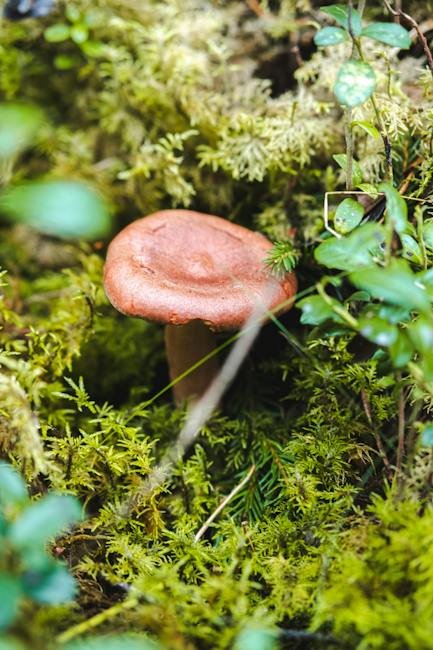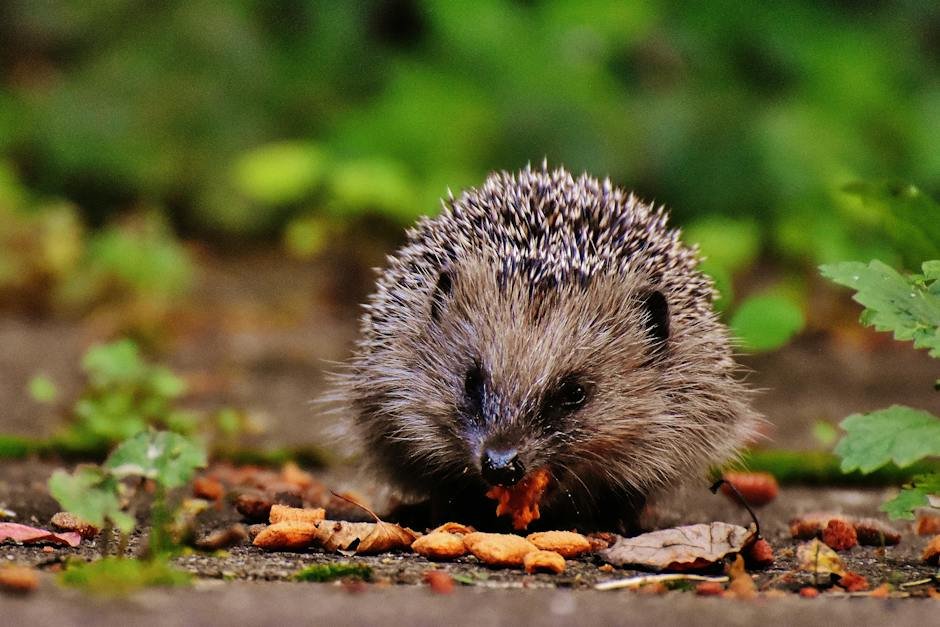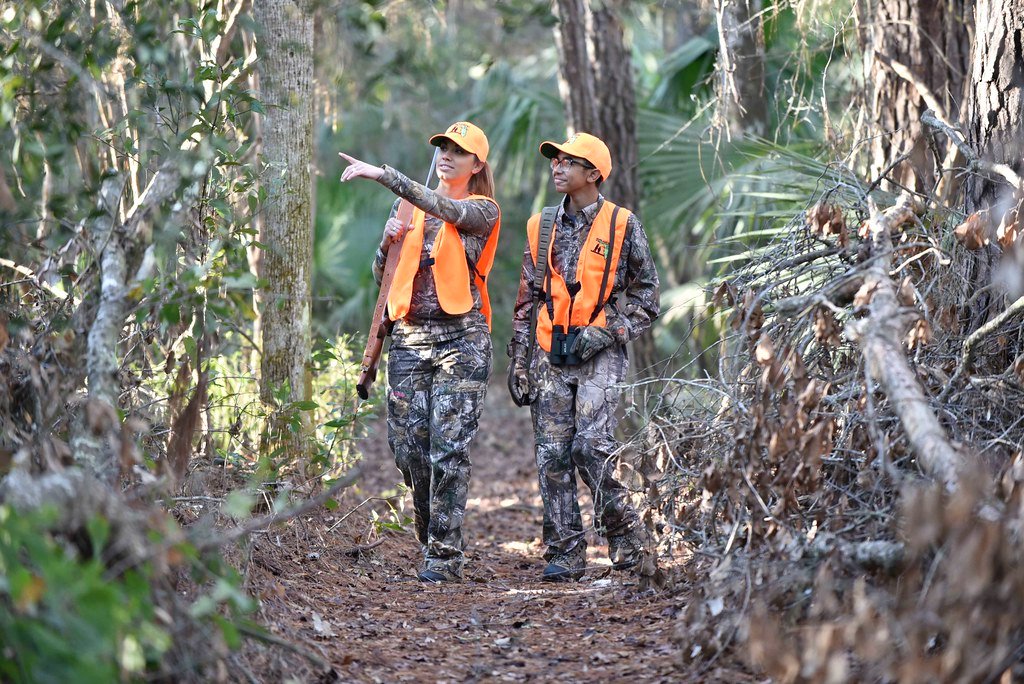Now Reading: Top 10 Edible Plants Every Forager Should Know
-
01
Top 10 Edible Plants Every Forager Should Know

Top 10 Edible Plants Every Forager Should Know
Are you ready to embark on a whimsical journey through nature’s edible wonderland? Prepare to indulge in a delectable feast for both the palate and the senses, as we uncover the top ten edible plants that every intrepid forager should acquaint themselves with. For those seeking to tap into their primal instincts and reconnect with the bountiful offerings of the earth, these remarkable plants are nature’s culinary treasures, waiting to be discovered and savored. Whether you are a seasoned forager or a novice explorer of the wild, this tantalizing guide will ensure that you never overlook the culinary delights hidden within the lush embrace of the natural world. So, slip on your foraging hat, sharpen your senses, and let us dive headfirst into this captivating adventure, where every step brings us closer to the edible wonders that await us.
Table of Contents
- Foraging 101: The Essential Skills and Safety Tips Every Forager Should Know
- Exploring Nature’s Bounty: 10 Must-Know Edible Plants for Foragers
- Tantalizing Tastes: Impress Your Friends and Family with These Delicious Foraged Delicacies
- A Step-by-Step Guide: Identifying and Harvesting Edible Plants in the Wild
- Nature’s Pantry: Nutritious and Sustainable Foraging for a Healthier Lifestyle
- Q&A
- Final Thoughts

Foraging 101: The Essential Skills and Safety Tips Every Forager Should Know
The Essential Skills and Safety Tips Every Forager Should Know
When it comes to foraging, having the necessary skills and knowledge is crucial to ensure a successful and safe experience. Whether you’re a novice or an experienced forager, keep these essential tips in mind:
- Identify plants and mushrooms: Before venturing out, familiarize yourself with the species you intend to forage. Be aware of their distinctive features, habitats, and potential look-alikes to avoid any mishaps.
- Seasonal awareness: Different plants and mushrooms flourish in specific seasons. Understanding the timing of their growth and lifespan is essential to know when and where to find them.
- Know your surroundings: Familiarize yourself with the environment you’re foraging in. Learn about the local regulations, potential hazards, and any endangered species that require protection.
- Forage sustainably: Harvesting responsibly ensures the longevity of natural resources. Adopt a “take only what you need” approach, so future generations can also enjoy the bounty of nature.
- Safety first: Equip yourself with the right tools, such as a field guide, knife, and appropriate clothing. Always watch your step, be cautious of wildlife encounters, and if in doubt, consult an expert.
By honing these essential skills and adhering to safety precautions, you’ll embark on a rewarding foraging journey, discovering the wonders of nature’s pantry while preserving its delicate balance.

Exploring Nature’s Bounty: 10 Must-Know Edible Plants for Foragers
Embark on a wild culinary adventure as we unravel the secrets of nature’s remarkable bounty. Foragers, both seasoned and beginners alike, will delight in discovering these ten incredible edible plants that Mother Nature has graciously provided.
1. Stinging Nettle (Urtica Dioica)
A true gem among edible plants, the Stinging Nettle offers a unique blend of earthy flavor and health benefits. Carefully harvested and prepared, this versatile plant can be used in soups, teas, or even sautéed in savory dishes. Remember to handle it with gloves due to its sting, but don’t let that deter you from exploring its nutritious value.
2. Dandelion (Taraxacum officinale)
Often dismissed as mere garden weeds, dandelions are a surprising addition to any forager’s list. The leaves can be enjoyed as a refreshing addition to salads, while their vibrant yellow blossoms can be transformed into exquisite dandelion wine. So next time you spot these cheerful invaders, take a moment to appreciate their extraordinary culinary potential.
3. Chickweed (Stellaria media)
Delicate and tender, chickweed is a delightful wild green that can be enjoyed raw or cooked. Bursting with vitamins and minerals, it adds a fresh and slightly nutty taste to your salads, sandwiches, or stir-fries. Don’t miss the chance to gather this humble plant and elevate your culinary creations to a whole new level.
4. Elderberry (Sambucus nigra)
The elderberry, with its rich color and sweet-tart taste, is a treasure trove of medicinal properties. From delicious jams and syrups to immune-boosting teas, this versatile berry has been cherished by foragers for centuries. Savor the goodness of elderberry, and experience the remarkable natural health benefits it offers.
5. Wild Garlic (Allium ursinum)
Aromatic and pungent, wild garlic is a wild forager’s dream. Foraging enthusiasts cannot resist its irresistible flavor, which can enhance any dish – from soups and stews to pestos and pastas. Equally cherished for its health benefits, this superfood adds a burst of culinary magic to your plate while nourishing your body.
6. Fiddleheads (Matteuccia struthiopteris)
Discover the exquisite taste and texture of fiddleheads, the young, coiled fronds of the ostrich fern. These delicate greens are nature’s gift to adventurous palates. Boil or steam them to bring out their unique nutty and asparagus-like flavor, and enjoy them as a remarkable side dish or a delightful addition to your favorite recipes.
7. Beach Plum (Prunus maritima)
Dancing along the sandy shores, the beach plum offers a burst of tartness that perfectly complements a wide range of culinary creations. Its small, jewel-like fruits can be turned into delicious jams, jellies, and sauces, bringing a taste of the seashore to your table. This coastal treasure is a must-try for any passionate forager.
8. Purslane (Portulaca oleracea)
Purslane, with its succulent leaves and lemony flavor, is a hidden culinary gem. Often found in gardens and sidewalks, this humble plant is packed with omega-3 fatty acids and other essential nutrients. Incorporate it into your salads, stir-fries, or even pickle it for a tangy delight that will surprise your taste buds.
9. Wild Blueberries (Vaccinium angustifolium)
Tantalize your senses with the intense sweetness and vibrant color of wild blueberries. Bursting with antioxidants and essential vitamins, these plump berries are nature’s candy. Whether added to pancakes, baked goods, or enjoyed straight from the hand, wild blueberries elevate any culinary creation to new heights.
10. Miner’s Lettuce (Claytonia perfoliata)
Delicate and distinctive, miner’s lettuce is a true treasure of the wild. Its tender leaves and subtle earthy flavor are a treat for salad enthusiasts. High in vitamin C and minerals, this vibrant plant is a refreshing addition to your culinary repertoire. Embrace its lush green charm and let it elevate your salads to a whole new level.

Tantalizing Tastes: Impress Your Friends and Family with These Delicious Foraged Delicacies
Turn your next gathering into an extraordinary culinary experience with these tantalizing foraged delicacies that are guaranteed to impress your friends and family. Discover the joys of exploring nature’s bounty as you gather unique ingredients that will elevate your dishes to a whole new level.
1. Wild Mushrooms: Venture into the woods and uncover the hidden treasures of wild mushrooms. From the earthy and robust flavor of porcini to the delicate and buttery chanterelles, there is a myriad of varieties waiting to be discovered. Create mouthwatering sauces, risottos, or simply sauté them with garlic and herbs for a decadent side dish.
2. Edible Flowers: Elevate your plating skills by incorporating edible flowers into your dishes. Not only do they add a pop of color, but they also bring unique flavors that range from citrusy marigolds to peppery nasturtiums. Use them as a garnish for salads and desserts, or experiment with floral infusions to create refreshing beverages that will delight your guests.
3. Foraged Berries: Take your desserts to the next level with the vibrant sweetness of foraged berries. Whether you stumble upon a patch of wild blueberries, raspberries, or blackberries, these little bursts of flavor will make any dessert irresistible. Bake them into pies and tarts, or transform them into homemade jams and sauces to elevate your breakfast spread.
Embrace the beauty of the untamed wilderness and unlock the potential of foraged delicacies. Surprise and delight your loved ones with these unique flavors that will leave a lasting impression. Remember to always research and familiarize yourself with the safe and sustainable practices of foraging before embarking on your culinary adventure.

A Step-by-Step Guide: Identifying and Harvesting Edible Plants in the Wild
Embarking on a journey to identify and harvest edible plants in the wild can be both thrilling and rewarding. Here is a step-by-step guide to help you navigate through this exciting endeavor:
Step 1: Research and educate yourself: Before you set foot into the wilderness, arm yourself with knowledge. Study field guides, attend workshops, and join nature clubs to learn about different types of edible plants and their specific identification features. Familiarize yourself with poisonous look-alikes to avoid any potential dangers during your foraging expedition.
Step 2: Choose the right location: Finding the perfect spot to search for edible plants is key. Look for areas away from pollution and chemical contaminants, preferably in less-trodden natural zones like forests, meadows, or your local nature reserve. These biodiverse locations often yield a variety of edible delights.
Step 3: Recognize the edible plants: Armed with your newfound knowledge, employ your senses to identify the plants. Observe their height, leaf pattern, flower shape, and distinctive features. Pay attention to their scent and taste, if safe to do so. Using field guides and smartphone apps can provide invaluable assistance in plant recognition.
Step 4: Take only what you need: Ethical foraging means being respectful to nature and preserving its delicate balance. Harvest only mature, healthy plants and leave behind enough for them to propagate and sustain local ecosystems. Overharvesting or uprooting rare species should be strictly avoided to protect ecological integrity.
Step 5: Prepare and enjoy your bounty: Once you have safely gathered your edible plants, it’s time to transform them into a delectable feast. Follow trusted recipes or experiment with your culinary skills to prepare delicious meals, salads, or herbal infusions. Share your knowledge and experiences with others, spreading the joy of nature’s pantry.
Remember, this guide is just the beginning of your journey into the world of edible plants. With practice, observation, and patience, you’ll gradually develop a deep connection with the wilderness, discovering new and nourishing treasures along the way.
Nature’s Pantry: Nutritious and Sustainable Foraging for a Healthier Lifestyle
Immerse yourself in the wonder of nature and discover the incredible benefits of foraging for a healthier and more sustainable lifestyle. When we step into the bountiful wilderness, we unlock a treasure trove of nutrient-rich and delicious foods that Mother Nature provides. Foraging not only connects us with the earth but also allows us to nourish our bodies with the freshest and most natural ingredients.
Embarking on a foraging adventure brings us face to face with a wide array of plants, berries, nuts, and mushrooms that contain a powerhouse of vitamins, minerals, and antioxidants. From tangy wild berries bursting with flavor to earthy mushrooms with incredible medicinal properties, nature’s pantry truly offers a marvelous variety of options to enhance our well-being. By incorporating these wild foods into our diets, we are able to elevate our nutrition game and build a stronger foundation for a healthier lifestyle.
- Abundance and Diversity: Foraging allows us to tap into the abundance and diversity of nature, granting us access to unique ingredients that are not commonly found in stores.
- Close Connection with Nature: The process of foraging brings us closer to the natural world, forging a deeper connection and appreciation for the environment.
- Sustainability: By relying on the resources that the land generously provides, foraging minimizes our ecological footprint and promotes sustainable living practices.
- Taste Sensations: The flavors of foraged ingredients are often unparalleled, offering a delectable experience that leaves our taste buds tingling with delight.
- Health Benefits: Wild foods are packed with nutrients and offer an array of health benefits, from boosting our immune system to supporting optimal brain function.
So, take a step into the wild and explore the wonders of foraging. Unearth the magic of nature’s pantry and embark on a journey towards a healthier, more sustainable lifestyle.
Q&A
What are the top 10 edible plants every forager should know?
Every forager should be familiar with dandelions, stinging nettle, chickweed, garlic mustard, purslane, lambsquarters, violets, plantain, blackberries, and elderberries.
What makes dandelions a must-know edible plant for foragers?
Dandelions are not only ubiquitous, but their leaves, flowers, and roots are all edible. They are rich in vitamins and minerals, making them a nutritious foraging choice.
Why is stinging nettle on the list of top edible plants?
Despite the initial sting, stinging nettle has numerous health benefits and can be cooked or brewed into tea. Its high nutrient content, including iron and vitamin C, makes it a valuable addition to any forager’s repertoire.
What makes chickweed a valuable edible plant?
Chickweed is tender, tasty, and abundant. Packed with vitamins and minerals, it can be eaten raw or cooked. Foragers often find it in gardens, pathways, and open fields.
Why should foragers learn to identify garlic mustard?
Garlic mustard is not only an invasive species but also an edible plant. Its leaves have a distinct garlic flavor and can be used in salads or cooked dishes, making it a useful addition to a forager’s knowledge.
Why is purslane considered a valuable edible plant?
Purslane is a nutritional powerhouse with high levels of omega-3 fatty acids and antioxidants. Its slightly lemony flavor makes it versatile for use in salads, soups, or sautés.
What benefits do lambsquarters offer as an edible plant?
Lambsquarters is highly nutritious and closely related to spinach. Its tender leaves can be eaten raw or cooked, providing a good source of vitamins and minerals for foragers.
Why should violets be on a forager’s radar?
Violets provide a splash of color as well as a sweet floral taste. Both the leaves and flowers are edible and can be added to salads, used as a garnish, or brewed into tea.
What makes plantain a valuable edible plant for foraging?
Contrary to the widely known banana-like plantain, this plantain variety has broad leaves and is highly versatile. Its leaves can be eaten raw, used for salad wraps, or boiled and added to dishes.
Why are blackberries popular among foragers?
Blackberries are not only delicious but also plentiful and easy to find in many regions. They can be eaten fresh or used in various recipes, making them a beloved foraged treat.
What makes elderberries a worthy addition to a forager’s knowledge?
Elderberries are prized for their immune-boosting properties and antioxidant-rich nature. These tart berries can be used in jams, jellies, pies, or brewed into a soothing tea, making them a valuable resource for foragers.
Final Thoughts
As we peel back the layers of the natural world, we uncover a breathtaking array of wonders that connect us to our roots and beckon us to explore. Among nature’s abundant gifts, the edible plants that surround us offer a tantalizing journey into the wild, where flavors dance upon our tongues and nourishment is found in the most unexpected places.
Our expedition through the Top 10 Edible Plants Every Forager Should Know has taken us on a voyage of discovery, weaving through forests and meadows, unveiling Mother Nature’s delectable treasures. From the vibrant hues of berries bursting with sweetness to the tender shoots that whisper secrets of spring, these plants have been cultivated by centuries of wisdom and bear witness to the artistry of survival.
With a keen eye and an open heart, we have ventured beyond the supermarket aisles, embracing the bountiful harvest that awaits us in untamed landscapes. The earth, our ever-generous provider, has gifted us with divine treats that not only nurture our bodies but also fuel our spirits. From herbal remedies that heal and restore to wild greens that invigorate our palates, these edible plants encompass a profound connection to our natural heritage.
As we stand amidst the delicate whispers of chamomile and the robust symphony of wild garlic, we cannot help but realize that the bond between humans and plants is symbiotic, historic, and sacred. Deep within, we carry an ancient knowledge – that foraging is not just about sustenance, but a communion with the very essence of life. In gathering these edible treasures, we honor our ancestors and embrace the cycles of birth, growth, and renewal.
But let us remember that with foraging comes responsibility; an understanding that we are but humble custodians of nature’s kitchen. As we walk these paths, we must tread lightly and respect the delicate balance that sustains us all. It is our duty to study, to learn, and to impart wisdom on future generations, ensuring that this timeless knowledge endures and that nature continues to grace our tables.
As we bid farewell to delicious discoveries and bid adieu to this edible escapade, let us carry with us the spirit of adventure and reverence for the bountiful gifts nature offers. The world is our pantry, and the plants around us are not merely sustenance but a portal to a deeper connection to the land, ourselves, and the tapestry of life.
So, fellow foragers, may your quests be filled with wonder and your baskets overflow with nature’s nourishment. As you forge your own path through the untamed, be captivated by the flavors that spring from the Earth’s embrace. Go forth, with your senses attuned to the symphony of scents and tastes that await you, and embark on a lifelong journey in pursuit of the edible poetry woven through our lush, enchanting world.
As an affiliate, my content may feature links to products I personally use and recommend. By taking action, like subscribing or making a purchase, you’ll be supporting my work and fueling my taco cravings at the same time. Win-win, right?
Want to read more? Check out our Affiliate Disclosure page.





